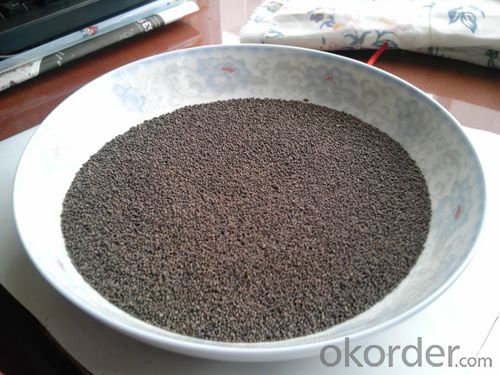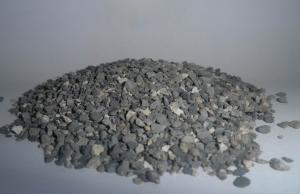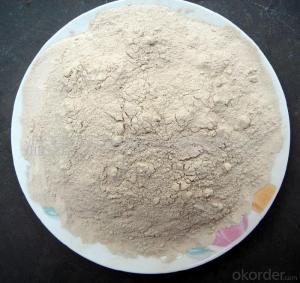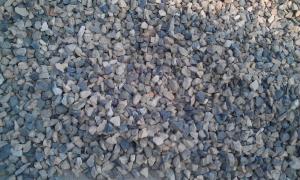Raw Materials for Refractory:Calcined Bauxite (Grade Size 1-3mm) Made in China
- Loading Port:
- China main port
- Payment Terms:
- TT OR LC
- Min Order Qty:
- 25 m.t.
- Supply Capability:
- 2000 m.t./month
OKorder Service Pledge
OKorder Financial Service
You Might Also Like
refractory grade size 1-3mm calcined bauxite
1. Calcined Bauxite 1-3mm brief introduction:
Calcined bauxite is a mixture of minerals that contain various concentrations of hydrated
aluminum oxides as well as impurities. The primary ore minerals are gibbsite (alumina tri-hydrate), boehmite and diaspore (alumina monohydrates).
2. Different grades calcined Bauxite 1-3mm tech datas:
Grade | AL2O3 | FE2O3 | TIO2 | K2O+Na2O | CaO+MgO | Bulk density |
75 | 75min | ≤3.0 | ≤4.0 | ≤0.3 | ≤0.5 | ≥2.70 |
80 | 80min | ≤3.0 | ≤4.0 | ≤0.3 | ≤0.5 | ≥2.80 |
85 | 85min | ≤2 | ≤4.0 | ≤0.3 | ≤0.5 | ≥3.00 |
86 | 86min | ≤2 | ≤4.0 | ≤0.3 | ≤0.5 | ≥3.10 |
87 | 87min | ≤2 | ≤4.0 | ≤0.3 | ≤0.5 | ≥3.20 |
88 | 88min | ≤1.8 | ≤4.0 | ≤0.25 | ≤0.5 | ≥3.25 |
90 | 90min | ≤1.8 | ≤4.0 | ≤0.25 | ≤0.5 | ≥3.25 |
3. Sizes available:
Grain size : 8-5mm, 5-3mm, 3-1mm, 1-0mm
powder: -320mesh, -280mesh, -240mesh, -200mesh,
-180mesh, -150mesh, -120mesh, -100mesh
320F 200F 280F 240F
200F 80F 150F 100F
4. Calcined Bauxite 1-3mm applications:
Aluminum smelting
Precision casting
Refractory products
Grinding materials

- Q: What are the models of refractory cables?
- The models of refractory cables: NH-KVV22 copper core flame-retardant PVC insulated and fire retardant control cables with steel belt sheath NH-KVVRP copper core flame-retardant PVC insulated and fire retardant shielding control cables with steel braiding sheath NH-KVVP2 copper core flame-retardant PVC insulated and fire retardant shielding control cables with sheath and steel belt wrapping NH-KVVRP2 copper core flame-retardant PVC insulated and fire retardant shielding soft control cables with sheath and steel belt wrapping NH-KFF copper core fluorine plastic insulated and fire retardant control cables with sheath NH -KFFR copper core fluorine plastic insulated and fire retardant soft control cables with sheath NH -KFFP copper core fluorine plastic insulated and fire retardant shielding control cables with sheath and copper wire braiding
- Q: How long is the fire resistant limit for ultra thin fire retardant coating?
- There is no detailed stipulation for ultra-thin fire retardant coating, and the thickness of the inside is the fire resistance limit shall reach certain time(at least). In engineering, the thickness of the fire retardant coating is generally determined according to the manufacturer's testing report. We use thin fire retardant coating for steel structure: if the fireproof limit is 2.5 hours. the thickness should be 4.9mm. If fire-resistant limit is 2 hours, the thickness shall be 3.5mm. If the refractory limit is 1.5 hours, the thickness shall be 1.75mm. If the limit is 1.0, the thickness is 1.17mm hope my answer can help you
- Q: Does the production of refractory belong to advanced technology?
- Refractory is traditional ceramic material. We can only say that national development is relatively backward. If the refractory is counted as new material, then it still has huge development potential.
- Q: What are the specifications of fire resistant bag?
- Currently there are four specifications: C10, C40, B40 and B50 suitable for steel ladle of less than 60 tons. I hope it can help you.
- Q: How long usually will the A-level fireproof materials prevent the flame?
- The classification of A-level materials is based on GB8624 - 2006 building materials and products combustion performance of grading method. Specific technical requirements are: 1, temperature ≤30 degrees; mass loss rate ≤50%; continuous burning time is 0; 2, the gross calorific value of main components, overall products, external non-substantial components ≤2.0MJ / kg; any internal non-substantial component ≤1.4MJ / kg;
- Q: Is there requirement for radiation indicator in refractory?
- All refractories have no radiated harm to environment, so there is no requirement. From the elemental analysis, magnesite. I do not know it is helpful to you. But for refractory rwa material, any chemical element is radiated, including silicon?dioxide; If they are radioactive. From the use analysis, such as bauxite, do not have use value.
- Q: Using what kind of melting aluminium furnace refractories is more appropriate?
- If it's the ordinary, you can use high aluminum refractory brick with general clay, GB/T 3994-2005 clay heat insulation refractory brick. If you need these with good material, there is high alumina thermal insulation refractory brick, GB/T 3995-2006 high aluminum heat insulation refractory brick, models have A13 and material is the alumina, A13 50 u, high insulating brick B5.Intermediate insulating brick B2, etc. Dolomite brick: good hang kiln performance, good erosion resistance, but brick is usually without f - CaO, hydration, and difficult to transport and storage, less used in the production. Magnesia-chrome bricks: good hang kiln, used in calcining zone. The disadvantage is that its thermal shock resistance is poor and plus hexavalent Cr is toxic, the production and use of magnesite chrome bricks in international countries gradually reduce. Now unit using the brick find replacements as soon as possible.
- Q: What are the differences and connections between softening temperature of the refractory under a fixed load and thermal resistant creep property of the refractory?
- The result of refractoriness under load is temperature while the result of creep is percentage of deformation. Refractoriness under load and creep can be tested by an instrument. Refractoriness under load reflects the temperature in which the deformation reaches a certain degree under the condition of load. Creep reflects the deformation refractory has under the condition of constant temperature and load. Both refractoriness under load and creep are important criterion for the operating temperature of refractory.
- Q: Who know about the knowledge of acid refractory material? Please explain in detail.
- Abrasion resistance of fire resistance material depends on the material group and structural material. The abrasion resistance of dense single crystal materials depends on the hardness of mineral crystal. The higher the hardness, the more resistance the material is to abrasion. non mineral crystals with fine grain material has a high wear resistance. The abrasion resistance of materials is related to bulk density or porosity. Aluminium refractory material can resist a temperature as high as 700~900 degree within the elastic range. The higher the temperature, the lower the resistance. Abrasion resistance will be increased with elastic modulus as temperature increase. In many cases, refractory material will often cause a lot of harm due to mechanical abrasion.
- Q: Refractory inquiries
- Acid refractory materials are commonly used brick and clay brick. Silica is silica containing more than 93% silica products, raw materials used in silica, silica and other waste, the acid resistance of slag erosion ability, high load softening temperature, volume shrinkage after repeated burning, or even a slight expansion; but it is vulnerable to the erosion of basic slag, low thermal shock resistance. The brick is mainly used for thermal equipment of glass furnace, coke oven, acid furnace etc.. Clay brick with refractory clay as the main raw material, containing 30% to 46% of alumina, weak acid refractory material, heat shock resistance, resistance to acid slag, widely used
Send your message to us
Raw Materials for Refractory:Calcined Bauxite (Grade Size 1-3mm) Made in China
- Loading Port:
- China main port
- Payment Terms:
- TT OR LC
- Min Order Qty:
- 25 m.t.
- Supply Capability:
- 2000 m.t./month
OKorder Service Pledge
OKorder Financial Service
Similar products
Hot products
Hot Searches
Related keywords


























